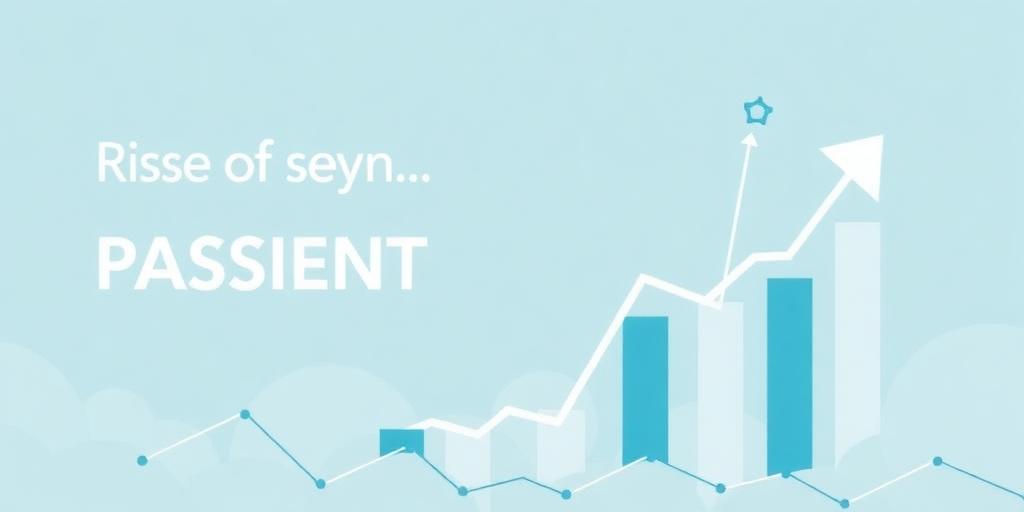The Rise of Passive Investing: A Psychological Shift for Both Retail and Institutions
The investment landscape is continuously evolving, and one of the most significant shifts in recent decades has been the rise of passive investing. Once considered a niche strategy, passive investing has now become a mainstream approach for both retail and institutional investors. This article explores the psychological underpinnings driving this shift and its implications for the future of finance.
What is Passive Investing?
Passive investing involves replicating the performance of a specific market index, such as the S&P 500, rather than actively trying to outperform it. This is typically achieved through index funds or exchange-traded funds (ETFs) that hold all or a representative sample of the securities in the index. The primary goal is to match the market's return, minimizing costs and turnover.
The Psychological Drivers
Several psychological factors have contributed to the growing popularity of passive investing:
- Loss Aversion:
- Investors tend to feel the pain of a loss more acutely than the pleasure of an equivalent gain. Active management, with its potential for underperformance, exposes investors to the risk of significant losses relative to the market. Passive investing mitigates this risk by ensuring returns align with the overall market, providing a sense of security.
- Regret Avoidance:
- The fear of making the wrong investment decision can be paralyzing. Active managers often make bets that don't pay off, leading to investor regret. Passive investing reduces the potential for regret by simply mirroring the market, thus avoiding the responsibility for specific stock-picking failures.
- Cognitive Biases:
- Investors are prone to various cognitive biases, such as overconfidence, confirmation bias, and the illusion of control. These biases can lead to poor investment decisions when actively managing a portfolio. Passive investing sidesteps these biases by adhering to a predetermined, systematic approach.
- Behavioral Economics Insights:
- Research in behavioral economics has highlighted the challenges of active investing. Studies have shown that most active managers fail to beat their benchmark indices over the long term, particularly after accounting for fees. This realization has led many investors to question the value of active management.
- The Paradox of Choice:
- In today's markets, investors are overwhelmed with choices, from individual stocks to actively managed funds. This abundance of options can lead to decision fatigue and anxiety. Passive investing simplifies the decision-making process by offering a straightforward, low-cost alternative.
Implications for Retail Investors
For retail investors, the rise of passive investing has several benefits:
- Lower Costs:
- Passive funds typically have lower expense ratios compared to actively managed funds, which can significantly improve long-term returns.
- Diversification:
- Index funds and ETFs provide instant diversification, reducing the risk associated with investing in individual stocks.
- Simplicity:
- Passive investing is easy to understand and implement, making it accessible to investors of all levels of experience.
- Tax Efficiency:
- Lower turnover in passive funds results in fewer taxable events, which can enhance after-tax returns.
Implications for Institutional Investors
Institutional investors, such as pension funds, endowments, and sovereign wealth funds, have also embraced passive investing for similar reasons:
- Cost Savings:
- For large portfolios, the cost savings from passive investing can be substantial, freeing up resources for other investment activities.
- Benchmarking:
- Passive strategies provide a clear benchmark for evaluating the performance of active managers. If active managers consistently underperform the index, institutions may reallocate assets to passive strategies.
- Risk Management:
- Passive investing can help institutions manage risk by ensuring that their portfolios closely track the market, reducing the potential for unexpected deviations.
- Transparency:
- Index funds and ETFs offer greater transparency compared to some active strategies, making it easier for institutions to monitor their investments.
The Future of Investing
The shift towards passive investing is likely to continue, driven by the psychological and economic factors discussed above. However, active management will not disappear entirely. There will always be a role for skilled active managers who can generate alpha (i.e., excess returns) through superior stock-picking or market-timing abilities. The key is for investors to understand the strengths and weaknesses of both active and passive strategies and to choose the approach that best aligns with their goals and risk tolerance.
Conclusion
The rise of passive investing represents a profound shift in how investors approach the market. By understanding the psychological drivers behind this trend, investors can make more informed decisions about their portfolios and better navigate the complexities of the financial world. Whether you are a retail investor or an institutional investor, considering the benefits of passive investing is a prudent step towards achieving your financial goals.









